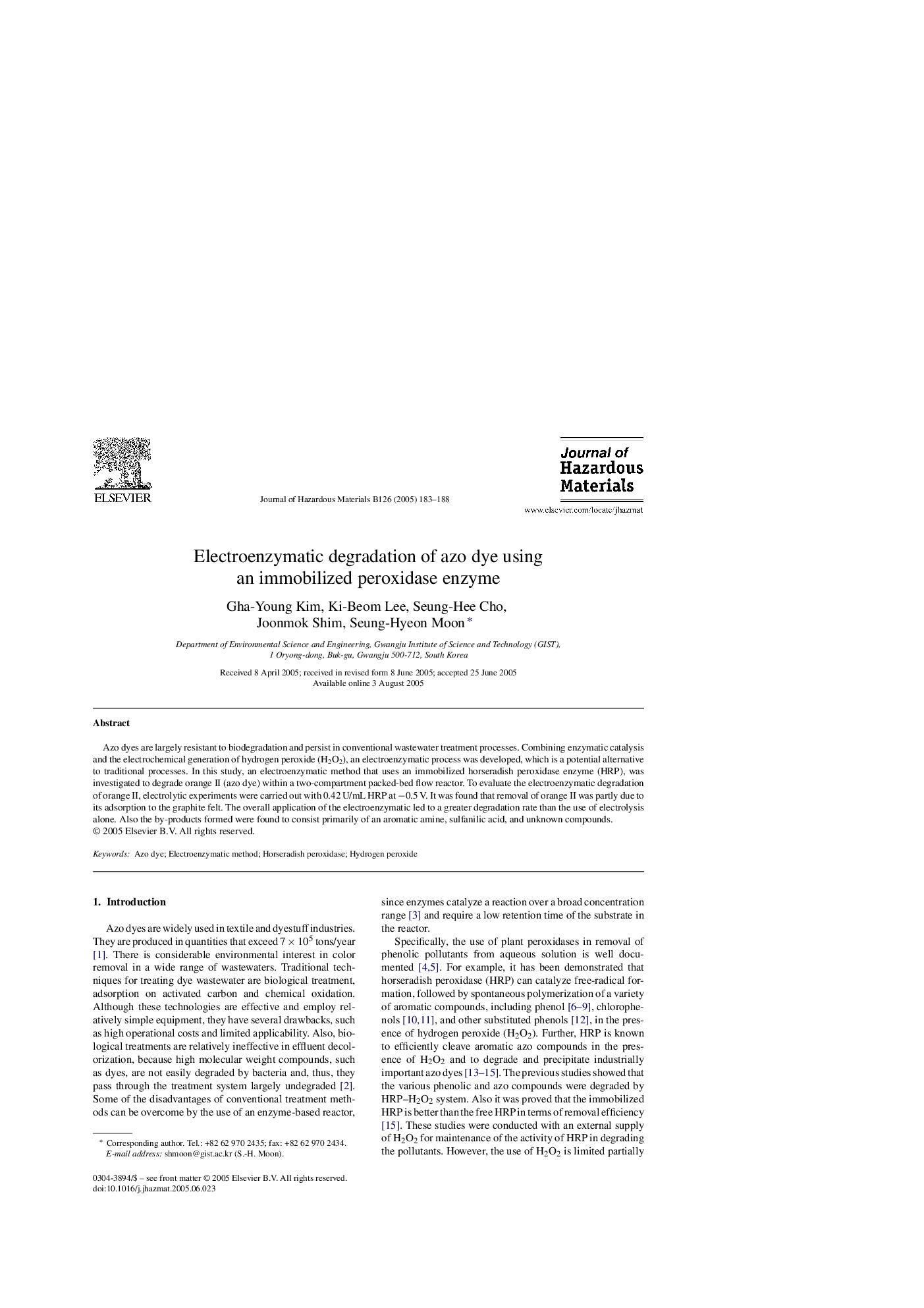| Article ID | Journal | Published Year | Pages | File Type |
|---|---|---|---|---|
| 9674109 | Journal of Hazardous Materials | 2005 | 6 Pages |
Abstract
Azo dyes are largely resistant to biodegradation and persist in conventional wastewater treatment processes. Combining enzymatic catalysis and the electrochemical generation of hydrogen peroxide (H2O2), an electroenzymatic process was developed, which is a potential alternative to traditional processes. In this study, an electroenzymatic method that uses an immobilized horseradish peroxidase enzyme (HRP), was investigated to degrade orange II (azo dye) within a two-compartment packed-bed flow reactor. To evaluate the electroenzymatic degradation of orange II, electrolytic experiments were carried out with 0.42Â U/mL HRP at â0.5Â V. It was found that removal of orange II was partly due to its adsorption to the graphite felt. The overall application of the electroenzymatic led to a greater degradation rate than the use of electrolysis alone. Also the by-products formed were found to consist primarily of an aromatic amine, sulfanilic acid, and unknown compounds.
Related Topics
Physical Sciences and Engineering
Chemical Engineering
Chemical Health and Safety
Authors
Gha-Young Kim, Ki-Beom Lee, Seung-Hee Cho, Joonmok Shim, Seung-Hyeon Moon,
